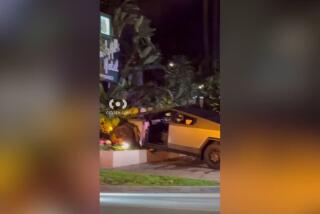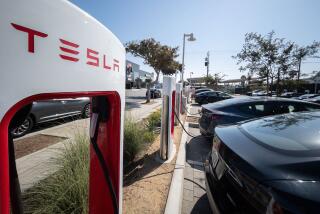Ask a physicist: Michio Kaku grades Elon Musk’s Hyperloop
Elon Musk, the billionaire innovator behind Tesla Motors, SpaceX and PayPal, revealed his alpha design for the buzzworthy Hyperloop on Monday, a proposed high-speed alternative that would carry passenger pods on airflow from Los Angeles to San Francisco in just over 30 minutes.
It seemed like a blue-sky proposal: great in theory – especially with California’s high-speed rail project hitting roadblock after roadblock before even breaking ground – but perhaps impossible in practice.
Still, Musk had plenty of believers rooting for the lauded “fifth mode” of transportation.
Dr. Michio Kaku, a futurist and physics professor at City College of New York, counted himself among them. “Normally I would think this idea is borderline crackpot, but this guy has a track record,” Kaku said. “You have to take him seriously. The guy is a doer.”
In Musk’s design, capsules carrying 28 passengers each would create air cushions to hover within a central tube along the I-5 and I-508 freeways. An electric fan on the front end of the capsule would transfer air to the back of the vessel, moving it swiftly forward at speeds anywhere between 300 and 760 mph. “It uses a series of novel tricks to reduce friction, increase speed and control costs,” Kaku summarized.
In the 57-page explanation of the Hyperloop design, Musk compared the underlying concepts to those involved in an air hockey table, except in this case, “it is the pod that is producing the air cushion, rather than the tube, as it is important to make the tube as low-cost and simple as possible.”
Kaku said the Hyperloop looked good on paper. “The overall design does not obviously violate any basic principles (of physics). It might work,” he said. “However, the key is to create small-scale models, place them in vacuum chambers, and see if the idea works and is economical… Things which work well on the drawing board at low velocities are notorious for failing at extremely high velocities.”
That kind of testing might be a ways off. Though he’s said he might consider building a prototype, Musk considers the Hyperloop design “open-source,” welcoming feedback from other engineers or transit experts. He doesn’t have plans to tuck into large-scale construction anytime soon. For now, his latest idea will likely stay a theoretical pipe dream.
“Hyperloop is like a cross between Flash Gordon and Henry Ford,” Kaku said. “But Henry Ford was able to take an idea – the Model T – and bring it successfully into the marketplace. It remains to be seen if the Hyperloop will follow.”
MORE:
Hyperloop firm makes its headquarters in downtown L.A.
Tesla battery swap in the Central Valley? Not quite






